Photo
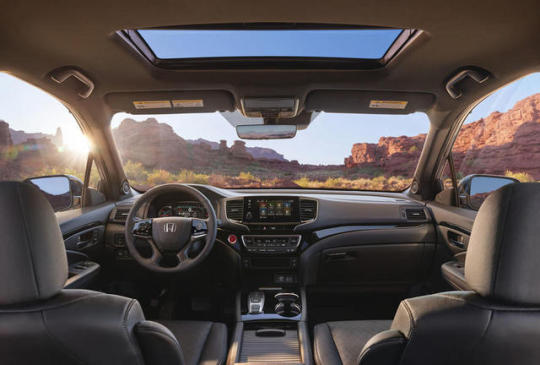
New Post has been published on http://twoarticles.com/new-honda-passport-mid-size-suv-launched/
New Honda Passport mid-size SUV launched
Four-wheel drive models can also switch between multiple driving modes for different weather and terrain, including snow, mud and sand, while front-wheel-drive models have a dedicated snowy conditions mode.
Honda claims the Passport delivers best-in-class passenger space and luggage capacity, with push-button folding seats and a segmented underfloor cargo compartment.
EX-L models and above receive an 8.0in touchscreen infotainment system as standard, complete with Android Auto and Apple CarPlay smartphone mirroring and a multi-angle rear-view camera. Touring and Elite trims add a premium 10-speaker stereo system, front and rear parking sensors and blindspot monitoring.
All models come with Honda’s suite of safety aids as standard, including lane-keeping assistance, adaptive cruise control and low-speed automatic emergency braking.
The Passport was designed by Honda North America and will be manufactured in the company’s Alabama factory. Like the Pilot, it’s based on Honda’s Global Light Truck platform.
There are currently no plans to bring the Passport to the UK. It’s due to go on sale in North America early next year.
READ MORE
2018 Los Angeles motor show: live updates and pictures
Honda CR-V Hybrid 2018 review
The best cars launching in America in 2019
This article is copyright www.ezinearticles.com 2018
0 notes
Photo

New Post has been published on http://twoarticles.com/the-most-important-skill-you-forgot-personal-growth-medium/
The Most Important Skill You Forgot – Personal Growth – Medium


Today, the world around us is being designed to steal our attention away.
We’re bombarded with things wanting access to our heads. And to be sure the message gets across, those firing the canons also shout, “You should really think about this DO something!”
Buy this! Vote that! Don’t vote that! Do something about this! Facebook sucks! Get active for my good cause! Jeans are so out of fashion! Be nicer to your spouse! Follow Maarten van Doorn on Medium!
People talking about us behind our back, political developments and work-related stuff are just one click away. Due to the transition into a digital attention-economy, the natural boundaries for input have disappeared. Anything and anyone can get to us, anytime.
The hard truth is, we are the first generation for whom living well is impossible if we don’t actively manage our attention.
The problem is we don’t know how to do that.
You must figure out what’s important to you
“You cannot overestimate the unimportance of practically everything.” — John Maxwell
We need to re-erect the boundary between attention-grabbing and important, but we have no clue what material to use for building the fences. We don’t know what would justify us drawing this boundary and not that, letting this in our mental space but excluding that. What lets the right things through, and keeps the right things out?
Sometimes feeling that it’s all just arbitrary, we’re left in a state of vertigo, numb, unable to decide:
“With no bedrock of certainty about what counts as a successful life, any choice to live a life may come to seem arbitrary. The result is often uncertainty or a sense of imbalance, because not only don’t you know what kind of life to live, you don’t know what, if anything, can give you certainty.” — Carl Elliott, Better Than Well
For many this causes massive stress. So let’s face it.
In the Great War For Attention, there are more inputs that we can possibly process. That means we’ll need to reject some demands on our time.
No, your blog/website/product/cause/company/conference/e-mail is not going to get concern. I’m sorry.
When you do this, people will disagree with what you deem to be worth caring about and what not. They will scream at you. Louder. And fire more cannon-balls. Harder.
We find our way out of the war-zone by looking in:
“[In making such fundamental judgments,] it is not exactly that I have no yardstick, in the sense that anything goes, but rather that what takes the place of a yardstick is my deepest unstructured sense of what it is important.” — Charles Taylor
And actually, for the sake of this problem, it doesn’t even matter that much what your “sense of what is important” tells you. As long as you tap into it. You need to figure out which things matter to you. It’s the only method for managing your attention that’s successful in the long term.
Why the only one? Because the only robust justification for rejecting people’s claims on our attention in favor of other claims is an appeal to our personally held values. To be able to erect firm boundaries, you need to figure out what’s truly important to you.
Work
“You cannot overestimate the unimportance of practically everything.” — John Maxwell
A natural starting place is deciding which things we care enough about to spend time on.
Especially when it comes to ‘Getting Things Done’, we are very prone to slip into the “collection mode”:
“Once you start to accumulate you are caught in this collection mode, which is, you’ll always find a reason to think that you need more and fail to realize that it in fact is taking away from something, from time with your kids or time sitting in the backyard reading another book, … .” — Ricardo Semler
Figuring out what’s truly important to us will tell us which projects are worth these sacrifices.
Many people haven’t answered that question and as a result, spend too much time on optimizing their strategy, and not enough on questioning whether they’re chasing worthwhile aims in the first place.
If you spend large chunks of your day on unimportant work, it’s no wonder that you feel overwhelmed by the important work.
After you’ve figured out what’s truly important for you now, you can tell people:
“This is me. This is what I do. This is what I don’t engage with.”
Because this judgment will be value-based, it allows us to be at peace with the inevitable opportunity costs that come with such a choice. On the other side of the same coin, because it’s value-based, it allows us to be fair with the people we reject.
Then, and only then, will the cannon-balls stop coming.
Life
“You cannot overestimate the unimportance of practically everything.” — John Maxwell
And there’s more to it. Over and above choosing on which things to spend time on, this is also about choosing which things you’re willing to suffer for (in the ‘first-world-problems’ sense of the term).
“‘Do I care enough to experience discomfort to get to the other side?’ If I don’t, then I should turn off the input. Because sitting with an uncomfortable input when we don’t care enough to make things better is just a formula to be unhappy.” — Seth Godin on the Tim Ferriss Show
What Seth means is this: part of judging something to be important is caring about it. We need to be care-ful with what we choose to care about, as this comes with a commitment to refuse to accept certain things. Non-acceptance makes us unhappy.
Something might be so important to me right now that I can’t accept it, and that now I’m going to put up with a mental battle for it. Then I realize that that’s where I’ve chosen to be unhappy.
The challenge is to limit non-acceptance to conscious non-acceptance and unhappiness to mindful unhappiness.
Do this
Knowing your Why provides you with the inner freedom to do what you believe and to cultivate the ‘subtle art of not giving a fuck’ about other things. To do something for your own reasons, and not for someone else’s. To thrive in today’s attention economy, you must get to the bottom of what this means for you.
In other words, you need to decide where and how you draw your line.
So here’s the one thing that you should do: be more like a kid.
When kids ask Why? and then Why? and then Why?, they’re trying to … get down to the first principles underneath so they can weigh how much they should actually care about what the adults [/people claiming our attention] seem so insistent upon. — Tim Urban, WaitButWhy
We’ve forgotten how to ask that profound question.
Want to get a head start in the game of life and get back into the why-mindset? Then, right now, spend 10 minutes writing down your deepest values.
The rest is not important.
This article is copyright www.ezinearticles.com 2018
0 notes
Photo
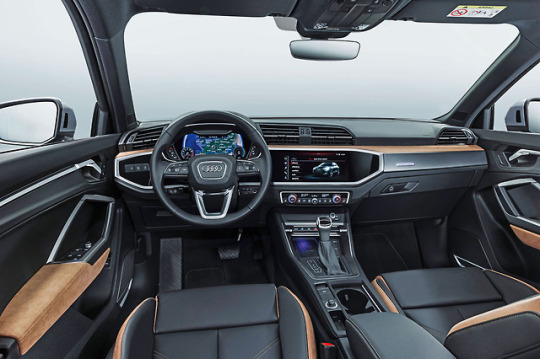
New Post has been published on http://twoarticles.com/new-higher-spec-audi-q3-to-cost-nearly-3000-more-than-predecessor/
New higher-spec Audi Q3 to cost nearly £3000 more than predecessor
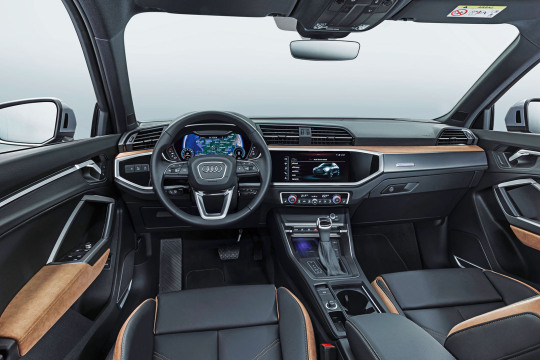
Like its larger siblings, the new Q3 is available with adaptive damper technology, as well as a long list of driver assistance systems. These include familiar cruise and park assistance features, a 360deg camera view and pedestrian detection. Inside, there’s the familiar suite of Audi technology but, as in the recently launched A1 hatchback, the Q3 inherits its systems from the class above. Entry-level cars get a 10.3in instrument cluster. Top-spec models feature either the 10.3in cluster or, when Audi’s Virtual Cockpit is specified, an optional 12.3in screen that uses Google Earth maps and accepts voice commands.

To enhance the new Q3’s family appeal, in the front of the cabin it has two USB ports, one of which accepts the smaller Type C connector that is likely to become the new standard. There are two more USB ports in the rear, as well as a 12V socket. The new Q3 is equipped with Apple CarPlay and Android Auto for smartphone connectivity and a 15-speaker Bang & Olufsen sound system is also offered.
An Audi spokesperson suggested that the 35 TFSI S line S tronic, which is available from £31,680, will likely be the most popular trim level.
Audi hasn’t released an official sales figures prediction for the new Q3, but it is hoping that it will match or exceed the success of the previous generation, which sold roughly 17,000 units in the UK.

Q&A: Matthias Fink, Audi Designer
Why did the Audi Q3 have to grow up?
“I always say the small dogs bark louder than the big ones. The Q2 is the small dog here. The Q3 is definitely not cute any more. Where the former Q3 was rounder, this one needed to be more abstract so it can be separate from Q2 and fit nicely beneath the Q5.”
This article is copyright www.ezinearticles.com 2018
0 notes
Photo

New Post has been published on http://twoarticles.com/new-ford-edge-officially-launched-in-europe/
New Ford Edge officially launched in Europe
The European-spec Ford Edge facelift has been officially launched ahead of its arrival on UK roads in 2019.
Ford’s biggest SUV sold in Europe has received a styling refresh inspired by the smaller Ecosport, with a more aggressive headlight design, with LED lights as standard and a new ovular grille at the front, as well as the disappearance of the characteristic light bar at the rear. A more conventional gloss-black extension of the glass is in its place, with larger separate rear light clusters.
The European car gets a 2.0-litre Ecoblue bi-turbo diesel engine at the top of the range, with 235bhp. Unlike the US, Europe won’t get the 335bhp, 380lb ft 2.7-litre V6-powered Edge ST. The European Edge will have exclusively diesel engines, with the sportiest spec being ST-Line, which gets an exclusive suspension set-up and paddle shifters, in addition to black exterior trim, chrome exhaust tips and 20in alloys.
The Ecoblue engine has two turbos – one large and one small – that work together for greater low-end torque, while at higher revs the larger, lower-pressure turbo works alone for greater power. It’s also available in 187bhp four-wheel drive and 148bhp front-wheel drive forms, while a new eight-speed automatic gearbox has been added to the Edge that can detect gradients and corners for more efficient and effective gear selection. Four trims feature on the new car – entry-level Trend, mid-range Titanium, Vignale and ST-Line.
This article is copyright www.ezinearticles.com 2018
0 notes
Photo
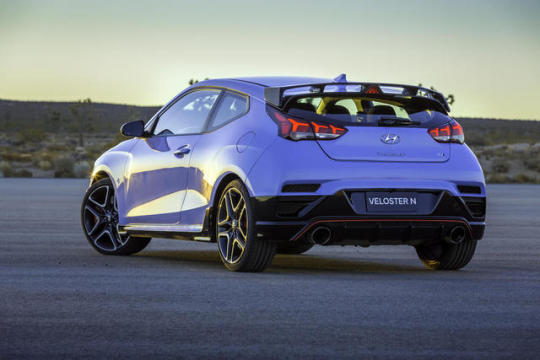
New Post has been published on http://twoarticles.com/hyundai-veloster-n-performance-2018-review/
Hyundai Veloster N Performance 2018 review
But there’s enthusiasm aplenty, as well. Like its i30 sister the Veloster N produces a fair amount of torque steer – it never feels wayward, but there’s no doubting the work that front tyres and suspension have to put in to deliver the boosty motor’s output over rougher surfaces. Grip levels are keen, the limited slip differential delivers plenty of front-end bite in slower, loaded turns and the Veloster proved willing to take an impressive amount of directional advice from the throttle pedal – the rear end neutralising cleanly or even being persuaded into some tidy oversteer.
The shift action for the six-speed manual gearbox is accurate, although a high-biting clutch in my test car made smooth low-speed progress difficult. The brake pedal felt a little rubbery at the top of its travel, as well – although there were no complaints about the retardation from the beefy discs.
Given its back-to-basics mission it would be churlish to complain about the N’s firm ride. Even with the switchable dampers in their gentlest setting the chassis only just stayed on the right side of harsh when exposed to some of rural Michigan’s rougher surfaces. Smooth Tarmac is necessary to engage the sportier modes without wincing. A fair amount of road noise reaches the cabin at cruising speeds and, as with the standard car, interior plastics feel low-rent and smell slightly cheap; less forgivable in a car that carries a 50% supplement over the base version in the States.
The Veloster’s strange, asymmetric three-door layout still seems to be a response to an unasked question with little obvious practicality: the Veloster remains a slightly lumpy coupe on one side and a cramped-looking hatchback on the other.
Should I buy one?
It’s hard to see the logic in Hyundai’s decision not to bring the Veloster N here, or indeed the rationale behind denying the i30N to the US. Both cars seem different enough not to tread on each other’s toes, and indeed both were developed together with the heavy involvement of Hyundai’s Nurburgring testing facility.
Although the Veloster N’s appeal would likely be more limited than its hatchback sister, it still offers an appealing if less practical package. It’s a fun, honest and quirky car that offers American buyers plenty of bang for their bucks; it’s just a shame we can’t buy those thrills for pounds as well.
Hyundai Veloster N Performance specification
Where Michigan, USA Price na (£29,885) On sale na Engine 1998cc, four-cylinder turbocharged petrol Power 271bhp at 6000rpm Torque 260lb ft at 1450rpm Gearbox 6-spd manual Kerb weight 1380kg Top speed 155mph 0-62mph 5.9sec (est) Fuel economy na CO2 na Rivals Audi TT 1.8 TFSI Sport, BMW 220i Sport
This article is copyright www.ezinearticles.com 2018
0 notes
Photo

New Post has been published on http://twoarticles.com/america-cant-fix-big-problems/
America Can’t Fix Big Problems


The system of government gets in the country’s way
Continue reading on The Atlantic »
This article is copyright www.ezinearticles.com 2018
0 notes
Photo
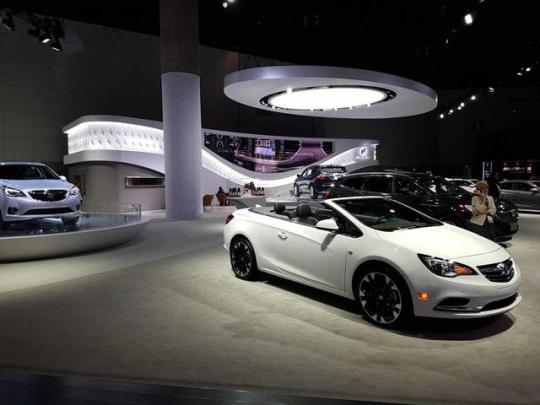
New Post has been published on http://twoarticles.com/gms-eerily-quiet-la-show-stands-reveal-the-sad-state-of-the-us-giant/
GM’s eerily quiet LA show stands reveal the sad state of the US giant
Despite plenty of talk of the death of the motor show, most major carmakers still put in considerable effort to draw in punters to their displays and stands. The Los Angeles motor show was still teaming with people eager to poke and prod at most brand’s latest models. Except, that is, on General Motors’ show stands.
GM’s big brands were there, alright, with the sizeable stands and full spectrum of product that you’d expect for its home market show. But every time I walked past the Cadillac, Buick, GMC and even Chevrolet stands, the people looking after the exhibits outnumbered the visitors looking at the cars.
Yes, it was a media day and the halls were not full of buying public, but I still suspect the punters have little interest in what GM’s formerly dominant brands have to offer. The buzz was over at the German and Japanese makers, most with something new and/or relatively exciting to show off, whereas none of GM’s stands had an all-new car on display.
This article is copyright www.ezinearticles.com 2018
0 notes
Photo
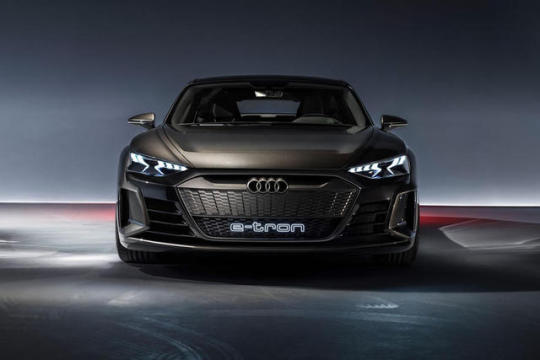
New Post has been published on http://twoarticles.com/qa-audis-design-boss-on-the-e-tron-gt-concept/
Q&A: Audi’s design boss on the E-tron GT concept
Audi’s flagship electric model, the E-tron GT, has been revealed at the LA motor show. The sports coupé concept, which will arrive in production form in 2020, promises Audi Sport performance and radical developments in charging times.
We talked to Audi design chief Marc Lichte about the project.
What was the biggest challenge with this car? Packaging. The challenge is always the battery pack in the floor. This car is 138cm high – that’s lower than an A7. There is no compromise here. The E-tron GT is my biggest achievement so far.
How important is the E-tron GT for Audi’s broader design? Every three years, we have a step [change] in design. The latest one was last year with the A8. The next step will be this. This car is the next evolution in our design in 2020, both exterior and interior.
Tell us about the grille. For Audi, it would be a big mistake to remove the grille. For our customers, it’s the Audi DNA. Before 2004, we didn’t have a unique face. It is very important that we don’t desert our face. So we said, why not invert it? It’s body colour. For me, it’s still an Audi but not with a combustion engine. This is the face of all our future EVs.
This article is copyright www.ezinearticles.com 2018
0 notes
Photo
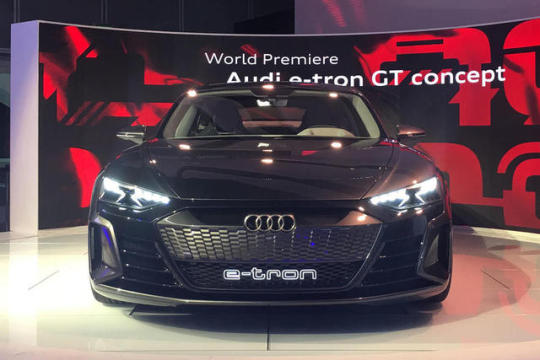
New Post has been published on http://twoarticles.com/audi-e-tron-gt-concept-unveiled-as-electric-flagship/
Audi E-tron GT concept unveiled as electric flagship
The GT’s two synchronous motors, one at the front and one at the rear, produce a collective 582bhp power output, enabling it to accelerate from 0-62mph in 3.5sec with a top speed of 149mph. Torque is transferred to the wheels via the quattro permanent all-wheel drive with torque vectoring.
“The acceleration isn’t important. It’s being able to reproduce that acceleration five, six, seven times,” said Audi Sport product marketing boss Stefan Holischka, alluding to some electric performance cars that struggle to replicate acceleration times more than once due to battery limitations.
The GT’s 96kWh battery takes up the entire underfloor area between the front and rear axles, giving the car a centre of gravity comparable to the R8.
There is also all-wheel steering, all of which creates a “sports car-like agility and precision,” said Audi. “The 96kWh battery is the perfect combination for performance, charging time and range,” added Holischka.
The E-tron GT uses the same J1 platform as the upcoming Porsche Taycan, which employs a flat battery, suitable for a low-sitting performance car.
When asked about other similarities between the two cars, Holischka said: “The Taycan will be a different character. We’ve tried to differentiate as much as possible. The [Porsche and Audi] designers were in close contact all the time.”
The body is made from a mixture of aluminum, high-strength steel and carbonfibre.
Lichte, who said the car is “very, very close to the production car”, added that there are a number of design elements for aerodynamics. For example, it has a dynamic spoiler that can be moved depending on whether a driver wants to focus on performance or economy. There are two front air curtains for the Audi Sport model, as well as specially designed wheels for better aero.
Talking about the broader design, Lichte said: “In the past, we did expressive design on the bonnet to accentuate the engine. Now we highlight the sill where the battery sits.”
This article is copyright www.ezinearticles.com 2018
0 notes
Photo

New Post has been published on http://twoarticles.com/what-is-the-difference-between-tailgating-and-piggybacking-through-an-access-controlled-secure-door/
What is the Difference Between Tailgating and Piggybacking Through an Access Controlled Secure Door?
Tailgating is when another person, whether an employee or not, passes through a secure door without the knowledge of the person who has gained legitimate access through the secure door. This is a similar concept to when there is a car following closely behind you on the freeway without your permission. You are being tailgated.
Piggybacking is when another person follows through a door WITH the permission of the person who has received access. If someone is hugging you or actually on your back, this is called “piggybacking”. Only 2 technologies are able to distinguish between 2 people hugging and 1 large person. Humans and 3-dimensional machine vision systems.
There are various methods of stopping tailgating and piggybacking through secure doors. At mission critical sites, 24/7 armed guards are often employed at significant expense. An alternative to an armed guard may be the installation of a 3-dimensional machine vision system that can differentiate between humans and objects. This is the same proven technology that has been employed for decades in the field of factory automation and robotics. Newton Security‘s patented T-DAR technology is worlds most reliable system for detecting and preventing tailgating through secure doors.
The two types of entrances that are found in an anti-tailgating system are single doors and a set of 2 doors in a secure space which is called a mantrap.
A single door anti-tailgating system has the ability to alert sound and alarm, alert security personnel to an unauthorized intrusion. Since there is only one door, this cannot be a man trap.
A mantrap is a secured space with 2 or more doors. When 1 person enters the mantrap area the T-DAR 3-D machine vision system performs a dynamic scan, confirming that only one person is in the space. If another person enters the space, they are detected and since there are now 2 people in the space an alarm is sounded. The door on the secure side of space is locked so neither person can enter space. Both people must exit the mantrap before entry process may proceed.
Here is a pretty good demonstrations of a mantrap in action: http://www.youtube.com/watch?v=gYw0rskVHTU
This article is copyright www.ezinearticles.com 2018
0 notes
Photo
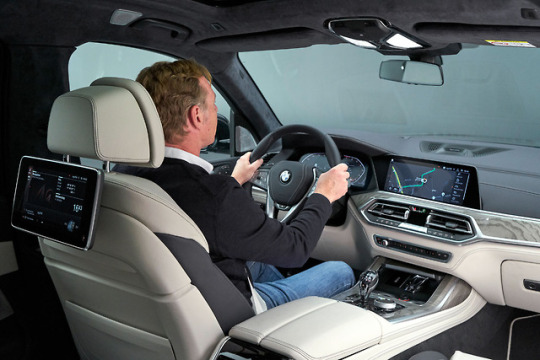
New Post has been published on http://twoarticles.com/bmw-x7-makes-show-debut-at-la/
BMW X7 makes show debut at LA
Previewed by the Concept X7 at last year’s Frankfurt show, the X7’s key design elements include a large kidney grille in an upright front end, angular LED headlights with optional laser projectors, a heavily contoured bonnet, a tall glasshouse and a two-piece electric tailgate.
In keeping with its upmarket aspirations, the new model makes extensive use of chrome exterior accents and comes in two trim packages: a standard variant and the more style- focused M Sport alternative.
At 5151mm in length, the X7 is a considerable 230mm longer than the new X5 and just 89mm shorter than BMW’s longest production car, the existing long-wheelbase 7 Series. The width and height of the new BMW are 1990mm and 1805mm respectively, and it has a 3105mm wheelbase.
Inside, the X7 follows the same design theme as the latest X5, with a multi-layered dashboard that houses a digital instrument panel and a standard 12.3in touchscreen infotainment display.
Standard equipment on all models includes four-zone air conditioning, soft-close doors, a three-piece glass sunroof and a park assistant function with a reversing camera.
All three rows of seats have electric adjustment, and buyers can specify a six-seat option in a 2+2+2 configuration that includes individual second-row seats. The second row of seats are said to offer 90mm more leg room and 30mm more head room than the X5.
Luggage capacity varies from 326 litres with all seven seats in place to 740 litres with the two rearmost seats folded into the boot floor. With the second row seats stowed via a standard electric mechanism, the maximum load capacity rises to 2120 litres.
Four X7 models have been confirmed, although just three are destined for the UK. The expected volume-selling models include the X7 xDrive40i, which uses a turbocharged 3.0-litre straight- six petrol engine with 335bhp and a 0-62mph time of 6.1sec. It manages 32.5mpg combined and emits 198g/km of CO2.
This article is copyright www.ezinearticles.com 2018
0 notes
Photo
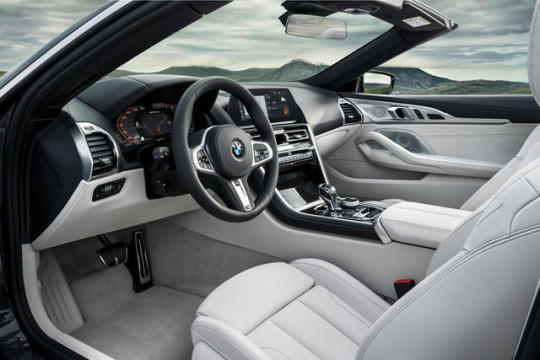
New Post has been published on http://twoarticles.com/new-bmw-8-series-convertible-debuts-at-la/
New BMW 8 Series convertible debuts at LA
Both engines come mated to a standard eight-speed torque converter-equipped, ZF-produced automatic gearbox and BMW’s four-wheel-drive xDrive system. The M850i xDrive convertible also receives an electronically controlled rear differential lock – a feature available as an option on the 840d xDrive convertible.
The 1955kg 840d xDrive can crack 0-62mph in 5.2sec, the 2055kg M850i xDrive in 3.9sec, and both have a limited top speed of 155mph. Next year, the M8 will join the range using an even more potent twin-turbocharged version of the M850i’s 4.4-litre V8. An 840i is also set to be introduced as an entry-level version.
Predictably, the new 8 Series convertible mirrors the look of the new 8 Series coupé, with a bold front end and muscular lines. Its multi-layer fabric roof, which comes in a choice of either a standard black or optional anthracite colour, opens in 15sec at the touch of a button at speeds up to 31mph, automatically stowing beneath a tonneau cover trimmed with the same slush moulded plastic as the dashboard and door trims at the rear of the 2+2 cabin. BMW claims 350 litres of boot capacity with the roof in place, which is reduced when it is stowed. To accommodate lengthy items, the rear seats split and fold in 50:50 form to free up greater load space.
A plastic wind deflector similar to that already seen on 6 Series convertibles can be erected to reduce wind buffeting when the roof is down, although it requires the rear seats of the 8 Series convertible to be unoccupied.
Despite its higher positioning, the new 8 Series convertible is 54mm shorter than the old 6 Series convertible at 4843mm in length, while its width and height is put at 1902mm and 1339mm respectively. It also uses the same wheelbase as the recently introduced 8 Series coupé at 2822mm.
This article is copyright www.ezinearticles.com 2018
0 notes
Photo

New Post has been published on http://twoarticles.com/experimental-curved-pavilion-uses-3d-knitted-textile-formwork-for-concrete-video/
Experimental curved pavilion uses 3D knitted textile formwork for concrete (Video)
Created by Zaha Hadid Architects, this innovative project demonstrates the possibilities of using KnitCrete technology for creating curved concrete shells efficiently.
We’ve written for some time now about how a variety of digital fabrication techniques are changing the way we build and make things, whether it’s 3D printing, or using robots and drones to weave structures.
Demonstrating the possibilities of using 3D-knitted formwork for creating ultra-thin and lightweight concrete forms — without the need for expensive moulds — Zaha Hadid Architects (ZHA) recently completed KnitCandela, an experimental pavilion that re-imagines the iconic concrete shell structures of Mexican architect and engineer Félix Candela. Watch here to see how it was done:
youtube
© Juan Pablo Allegre
© Juan Pablo Allegre
The project came about as a collaboration between ZHA’s computation and design research group, ZHCODE — which oversaw the structure’s architectural design — and Block Research Group (BRG) of ETH Zurich, which developed the KnitCrete formwork technology and supervise the structural design and construction system. As ZHA explains:
While Candela relied on combining hyperbolic paraboloid surfaces (‘hypars’) to produce reusable formworks leading to a reduction of construction waste, KnitCrete allows for the realization of a much wider range of anti-clastic geometries. With this cable-net and fabric formwork system, expressive, freeform concrete surfaces can now be constructed efficiently, without the need for complex molds. KnitCandela’s thin, double-curved concrete shell with a surface area of almost 50 square metres (538 square feet) and weighing more than 5 tonnes, was applied on a KnitCrete formwork of only 55 kilograms (121 pounds).
© Mariana Popescu
© Philippe Block
© Mariana Popescu
© Leo Bieling
According to the design team, the KnitCrete formwork uses a custom-designed, 3D-knitted technical textile as a lightweight vertical formwork, using over two miles (3.2 kilometres) of this special yarn that is machine-knitted into four seamless, double-layered strips measuring between 15 and 26 metres (49 and 85 feet). These strips were hung from a wooden frame using a tension cable-net system, and then 1,000 modelling balloons were then inserted in between the two layers to create the final shape. The exterior was then coated in a special cement paste to finalize it as a rigid form. The team says:
The pockets created between the two layers as part of the spatial knitting process are inflated using standard modeling balloons. These inflated pockets become cavities in the cast concrete, forming a structurally efficient waffle shell without the need for a complex, wasteful formwork. Pockets located on this exterior side of the textile have different knit densities to control the inflated shape and openings for the insertion of the balloons, enabling cavities of different dimensions to be created with one standard balloon size.
© Lex Reiter
© Maria Verhulst
© Lex Reiter
© Mariana Popescu
© ZHCODE
As the team notes, this method lessens the need for extra support structures and scaffolding. It’s extremely easy to transport, so much so that in the case of this structure, the feather-lightweight knitted formwork was actually carried from Switzerland to Mexico in a suitcase. KnitCandela is currently being exhibited at the Museo Universitario Arte Contemporáneo (MUAC) in Mexico City. See more over at Zaha Hadid Architects.
vimeo
KnitCrete from Block Research Group on Vimeo.
Experimental curved pavilion uses 3D knitted textile formwork for concrete (Video)
Created by Zaha Hadid Architects, this innovative project demonstrates the possibilities of using KnitCrete technology for creating curved concrete shells efficiently.
This article is copyright www.ezinearticles.com 2018
0 notes
Photo

New Post has been published on http://twoarticles.com/10-gifts-for-the-zero-waster-in-your-life/
10 gifts for the Zero Waster in your life
Have a friend or family member who’s trying to reduce trash? Give them the tools to succeed!
If you have a friend or family member who is interested in pursuing a zero waste lifestyle, then this is the perfect time of year to give them some of the tools that will make that transition easier. Giving gifts might seem at odds with the zero waste lifestyle, but the fact is that a few basic supplies can be enormously helpful – and the more supplies one has, the more likely one is to stick with it. So, in an effort to give gifts that are conducive to zero waste success, here’s what we recommend.
1. Shampoo Bars
© Lush (used with permission)
Give the gift of plastic-free hair care. Shampoo bars are a brilliant way to keep one’s hair clean without relying on plastic bottles. Check out the fun offerings at Lush Cosmetics, or the beautiful shampoo-conditioner bar sets by Unwrapped Life, a Calgary-based company.
2. Set of organic cotton produce bags
Unsplash/Public Domain
Reusable produce bags are a staple in any zero waste grocery shopping kit. They hold fruits and vegetables while allowing the cashier to see through easily. The drawstring holds snugly to prevent items from falling out. I’ve been using mine for years and they’re still in great condition. You can buy mesh or solid cotton ones here, or make a set of homemade.
3. Stainless steel food container
Make transporting food easier than ever with a stainless steel tiffin. It has several layers for different foods and snaps together for convenient carrying. You’ll never want to reach for another Ziploc bag again, nor will you ever have to accept packaging from a takeout joint if you keep this handy. Available in different sizes.
4. Reusable Makeup Remover Pads
Disposable wipes, begone! These super-soft makeup remover pads are used in exactly the same way as disposable ones. Just add water, toner, makeup remover, or facial oil and rub to remove makeup. Launder after use and reuse indefinitely. Comes with a laundry bag to keep pads contained.
5. Abeego wraps
© Abeego
Also known as beeswax food wraps, these wax-infused wraps are a far better way to store food than in plastic. They allow the food to breathe, inhibiting rot, while protecting it from moisture. The wraps last for at least one year and come in small, medium, and large.
6. Yogurt Maker
Wikimedia Commons/Public Domain
If you are shopping for someone who likes eating yogurt, why not give them the tools to make their own and get rid of all those plastic containers? Making yogurt is incredibly easy once you get the hang of it. See yogurt makers here.
7. Reusable menstrual kit
These products are a must-have for any female zero-waster. Every reusable pad replaces 125+ disposables. Buy a menstrual cup or a set of cloth pads or pantyliners – or get them together, as offered here by Luna Pads.
8. Refillable fountain pen
Take writing to the next level with a beautiful fountain pen. When the ink runs out, it gets topped up again, instead of tossed in the trash. Life Without Plastic offers stainless steel Diplomat pens made in Germany, with minimal plastic components.
9. Mason jar accessories
© Ippinka
You already knew that Mason jars are amazing, but did you know they can be converted into a number of handy tools, thanks to some cleverly-designed tops? EcoJarz sells a cheese grater lid, drink tops, pump-action soap dispensers, toothbrush holder, a pour-over coffee and tea kit, and a cool connector that allows you to screw two jars together. Check out all the options here.
10. Reusable coffee cup
Owning a great reusable coffee cup will make a person eager to use it and less likely to forget it at home. There are many options out there, from the gorgeous pottery ones pictured above to double-walled glass to insulated stainless steel.
Have a friend or family member who’s trying to reduce trash? Give them the tools to succeed!
This article is copyright ezinearticles on website http://www.twoarticles.com 2018
0 notes
Photo

New Post has been published on http://twoarticles.com/decarbonization-must-treble-to-keep-up-with-climate-change/
Decarbonization must treble to keep up with climate change
Progress is being made. But the climate keeps unravelling.
Writing for TreeHugger can be an emotional rollercoaster. On the one hand, we see countries achieving Victorian-era emissions, we see coal miners embracing a transition to renewables, and electrification of transportation nipping away at Big Oil from almost every direction.
On the other hand, the impacts of climate change are making themselves known in more obvious—and sometimes terrifying—ways than ever before.
As many people smarter than me have argued, the question now is not whether we will decarbonize, but rather whether we will do so fast enough to stave off the worst impacts of the damage we have already wrought. The newly released 2018 Emissions Gap Report from the UN Environment Program suggests the trajectory is not promising.
The report focuses specifically on the gap in 2030 between emission levels if all countries live up to their currently publicized commitments, and those consistent with least-cost pathways to stay below 2°C and 1.5°C. Among its findings is an eye opening conclusion that both ambition and action need to treble, and that’s just to remain consistent with a two degree scenario. To stay below 1.5°C, we actually need to pick up the pace some five fold in order to succeed.
Following hot on the heels of an IPCC report suggesting we have 12 years to halve our emissions, and another from the US government (weirdly released over the Thanksgiving holiday) suggesting our economy will suffer significant damage if we don’t act now, there’s nothing particularly surprising about this report. But it is nevertheless galvanizing.
It’s time to pick up the pace, people. And it’s time to sideline those who still waffle on about “belief” and “non-belief” in an objective and very dangerous reality that is unfolding before our eyes.
youtube
Progress is being made. But the climate keeps unravelling.
This article is copyright ezinearticles on website http://www.twoarticles.com 2018
0 notes
Photo
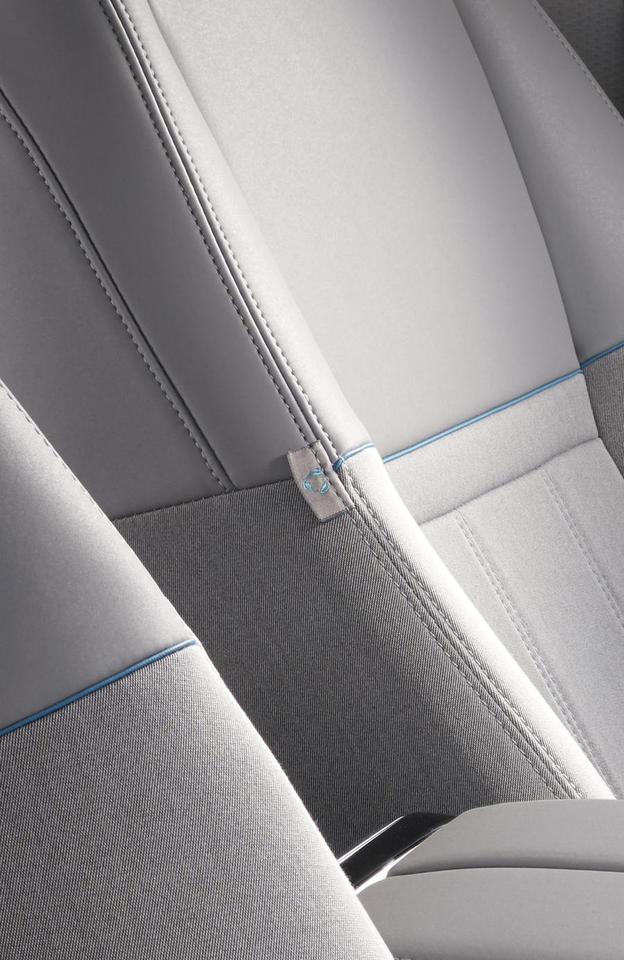
New Post has been published on http://twoarticles.com/comment-car-makers-are-looking-beyond-emissions-to-create-a-greener-world/
Comment: car makers are looking beyond emissions to create a greener world
The car industry is well and truly focused on reducing emissions to hit strict targets around the world.
But in the background, there is a quiet revolution under way with a number of car makers looking beyond lowering emissions to contribute to sustainability.
It’s a move that not only makes brands look socially responsible but also plays to the public’s growing awareness of what they consume and how it tallies to their values – whether it be what they eat, what they wear or which car they drive.
Only last year, Jaguar Land Rover revealed its Kvadrat material on the Velar as a premium alternative to leather. Kvadrat combines a wool blend with a suede cloth made from 53 recycled plastic bottles per vehicle, claims JLR.
Then, last week, at the reveal of the second-generation Evoque, JLR announced a cheaper, sustainable alternative too.
Buyers going for the top HSE trim of the Evoque can choose the Kvadrat material, while those opting for S or SE trims will be able to go for a PU and eucalyptus textile.
This article is copyright ezinearticles on website http://www.twoarticles.com 2018
0 notes
Photo

New Post has been published on http://twoarticles.com/whatever-happened-to-jimmy-carters-solar-panels-the-sequel/
Whatever happened to Jimmy Carter's solar panels: The sequel
Instead of an exciting adventure, we got a road not taken.
They are perhaps the most famous solar panels ever made, installed on the roof of the White House by President Jimmy Carter, who said at the time in 1979:
In the year 2000 this solar water heater behind me, which is being dedicated today, will still be here supplying cheap, efficient energy…. A generation from now, this solar heater can either be a curiosity, a museum piece, an example of a road not taken or it can be just a small part of one of the greatest and most exciting adventures ever undertaken by the American people.
And, as he was with most things, Jimmy Carter was right; they are a museum piece. The panels supplied hot water for domestic purposes and for laundry, but were removed in the Reagan administration, ostensibly because roof repairs were needed but also, according to mechanical engineer Fred Morse, quoted in Scientific American,
“We had a new administration that really did not like renewables very much. I don’t know if you remember those days when it was called alternative energy and there was something about ‘alternative’ that did not sit very well.” So when the time came to resurface the roof, the panels were taken down. “It was working fine, but the decision was it was not cost-effective.”
youtube
It then became part of a lovely story as the panels were installed at Unity College in Maine in 1990, as a way of bringing attention to the school’s mission of environmental education. They certainly succeeded at that; there was even a movie made about them, A Road not Taken.
© Himin Solar Valley
Solar thermal panels are full of plumbing and water and don’t last forever; the old designs were not very efficient. Unity College stopped using them in 2005, at which point they literally became museum pieces at the Smithsonian and, notably, in China. One was given to the Himin Solar Energy Group (now the world’s largest manufacturer of solar thermal panels), which donated it to the Technology Museum in Dezhou, near Solar City.
© Himin Headquarters, Solar Valley
They probably are laughing about it, how the USA missed this opportunity, while they sit in Solar City with millions of square meters of solar panels on every building, including their crazy round headquarters that is almost completely built out of solar panels, both thermal and photovoltaic.
© NRG Systems
Now one of the panels has been installed in the offices of NRG Systems. Its president, Justin Wheating, says in a press release: “We are proud to showcase this remarkable piece of American history and we continue to be inspired by President Carter’s vision for a more sustainable future.”
I can’t help but think how sad it looks, one useless panel hanging in front of a stone wall, available to the public by appointment only. Imagine what might have been, how every building in America might have looked like Solar City. If only it had been, as Carter wanted, “a small part of one of the greatest and most exciting adventures ever undertaken by the American people,” instead of a reminder of that road not taken.
Instead of an exciting adventure, we got a road not taken.
This article is copyright ezinearticles on website http://www.twoarticles.com 2018
0 notes